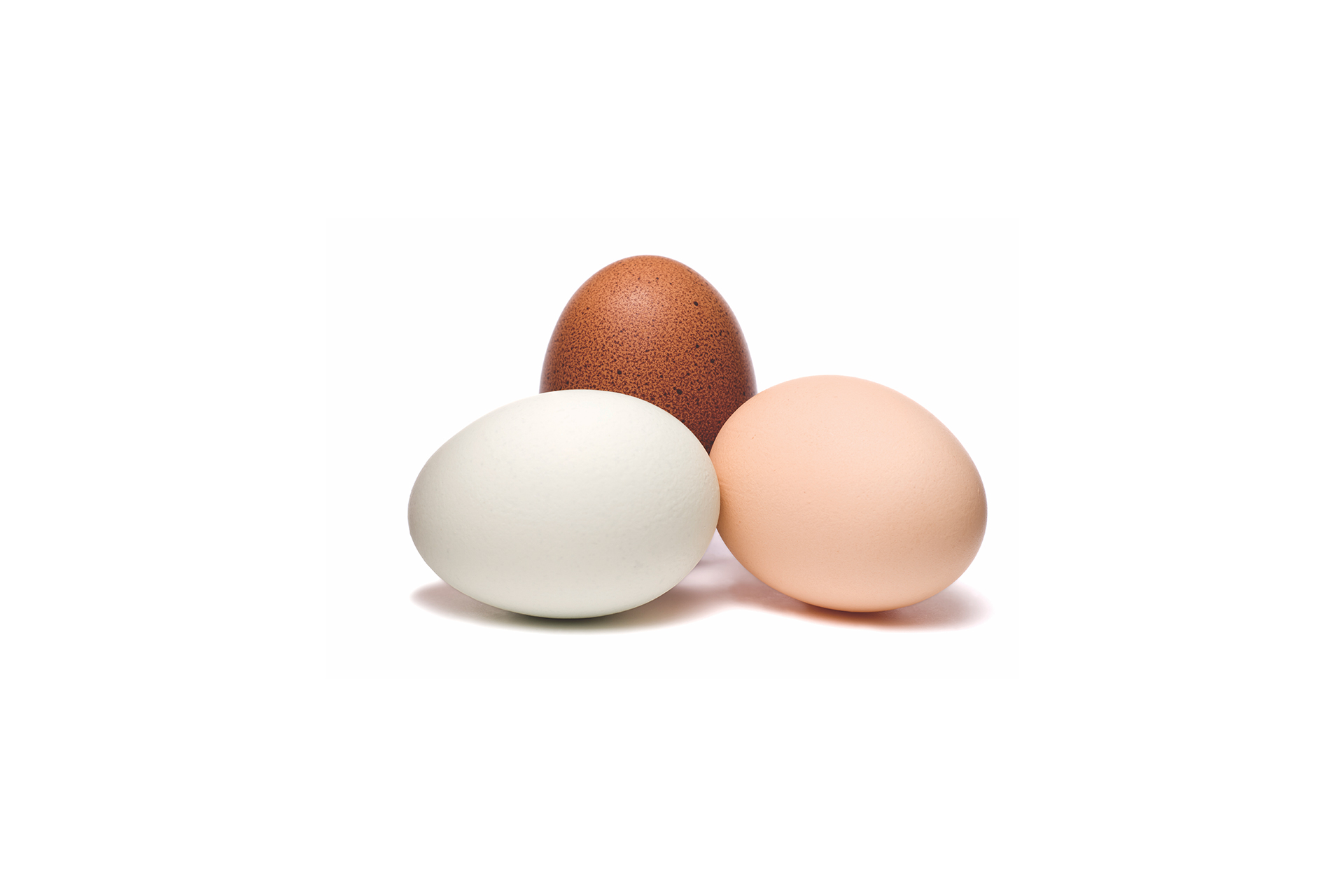
Tres recetas con huevo para comenzar el día
- Home
- Live Well Blog
- Tres recetas con huevo para comenzar el día
julio 24, 2024
Recetas
Si buscas buenas ideas para incorporar huevos al inicio del día, ¡llegaste al lugar indicado! Estas recetas con huevo están repletas de proteína, son fáciles de preparar y le dan a tu cuerpo el combustible necesario para los días atareados.
Sándwich clásico de huevo
Comienza el día con un rápido y sencillo muffin inglés integral con huevo y tendrás las proteínas necesarias para llegar a la hora del almuerzo.
PREPARACIÓN: 15 min | TIEMPO TOTAL: 15 min
PORCIONES: 2
UTENSILIOS DE COCINA
- Cuenco pequeño
- Sartén antiadherente pequeña
- Espátula
- Platos
INGREDIENTES
- 2 huevos grandes
- 2 cucharaditas de aceite de oliva o vegetal
- 2 muffin ingleses integrales,
- cortados y tostados
Instrucciones
- Precalienta una sartén pequeña a fuego medio durante unos 2 minutos, luego añade el aceite.
- Rompe un huevo en el borde del sartén y colócalo en el cuenco. Descarta o composta la cáscara.
- Pasa de a poco el huevo desde el cuenco a un lado de la sartén.
- Casca el segundo huevo en el cuenco y colócalo en el otro lado de la sartén.
- Cuando los huevos comiencen a coagular y los bordes estén sólidos, usa la espátula para voltear el primer huevo y luego el segundo
- Sigue cocinando los huevos hasta que las yemas estén firmes.
- Pon una mitad de muffin inglés en cada plato. Pasa un huevo a cada muffin y luego tapa con las otras mitades de muffin. Sirve de inmediato.
¡Hazla tuya!
Bate el huevo, si lo prefieres, o añade algo de lo siguiente a tu sándwich:
- Rebanadas de queso bajo en grasa (el calor del huevo las derretirá un poco)
- Un puñado de espinaca baby (el calor del huevo la cocinará un poco)
- Unas rebanadas de aguacate o tomate
- Salsa picante

Quesadilla de huevo
Este platillo de desayuno lleno de proteínas es una mezcla entre un sándwich de queso fundido y un huevo revuelto.
PREPARACIÓN: 10 min | TIEMPO TOTAL: 10 min
PORCIONES: 1
UTENSILIOS DE COCINA
- Cuenco pequeño
- Tenedor
- Cucharas para medir
- Sartén pequeña
- Espátula
INGREDIENTES
- 1 huevo grande
- Sal
- 1 cucharadita de aceite de oliva o vegetal
- 1 tortilla de maíz 6 pulgadas
- 1 cucharada de queso cheddar o Monterey Jack rallado
- Salsa como aderezo (si te gusta)
Instrucciones
-
Precalienta la sartén a fuego medio.
Cuando la sartén esté caliente, añade aceite y calienta unos 30 segundos. - Rompe un huevo en el cuenco, añade una pizca de sal y usa el tenedor para batir hasta que la yema y la clara se mezclen bien.
- Añade el huevo a la sartén y déjalo coagular unos 10-15 segundos.
- Pon la tortilla sobre el huevo y presiona un poco; el huevo debería estar lo suficientemente blando para que la tortilla se le pegue. Deja que el huevo se cocine hasta que no se vea líquido y usa la espátula para voltearlo y que la tortilla quede abajo.
- Pon queso sobre el huevo.
- Cocina hasta que el queso se derrita, el huevo se cueza y la tortilla esté bien tostada. Dobla a la mitad con el huevo y el queso por dentro, ponle salsa por encima si te gusta, y sirve de inmediato.
¡Sé creativa!

Intenta agregando esto:
- Una taza de pimiento verde, amarillo o rojo en cubos
- Una cucharada de yogur natural
- Un poco de salsa picante
- Un poco de hierbas frescas, como cilantro, albahaca o cebollín
- Un puñado de espinaca baby
Verduras al horno con huevo
Prueba este platillo con huevo cocido y deja que el horno se encargue de una buena parte del trabajo. Es una receta sencilla para el desayuno, el almuerzo o una cazuela de cena que es deliciosa fría o caliente.
PREPARACIÓN: 30 min | TIEMPO TOTAL: 1 hora
PORCIONES: 8
UTENSILIOS DE COCINA
- Tabla para cortar
- Cuchillo afilado (se necesita un adulto)
- Taza para medir
- Cucharas para medir
- Molde para horno de 8 x 8 pulgadas o tartera de 9 pulgadas
- Sartén mediana
- Espátula resistente al calor
- Cuenco mediano
- Tenedor o batidor
- Agarraderas
INGREDIENTES
- 3 cucharadas de aceite vegetal
- 1 cebolla pelada y picada
- 4 tazas (colmadas) de hojas de espinaca picadas
- 8 huevos grandes
- 1/2 taza de queso rallado o desmenuzado, como cheddar, suizo, feta o parmesano
- 1/2 cucharadita de sal kosher
- 1/2 cucharadita de pimienta negra
Instrucciones
- Precalienta el horno a 350 grados Fahrenheit. Con la mano limpia o una toalla de papel, esparce 1 cucharadita de aceite en un molde para horno.
- Precalienta una sartén en la hornalla a fuego medio y añade con cuidado las 2 cucharaditas restantes de aceite.
- Cuando el aceite esté caliente, añade y cocina la cebolla, revolviendo cada tanto hasta que esté dorada y blanda, durante unos 7 minutos.
- Agrega la espinaca y cocina hasta que se ablande un poco, unos 2 minutos. Deja esta preparación aparte, hasta que se enfríe, unos 10 minutos.
- Pon los huevos, sal y pimienta en el cuenco y usa el tenedor o batidor para mezclarlos bien.
- Añade queso y la mezcla enfriada de espinaca, y mezcla bien.
- Coloca la mezcla en el molde y llévalo con cuidado al horno.
- Hornea hasta que la parte superior esté dorada y los huevos coagulen, unos 25 a 30 minutos. Para ver si los huevos están coagulados, usa agarraderas para sacudir un poco el molde: no deberías ver que los huevos se muevan como si estuvieran líquidos en el centro.
- Sirve tibio o a temperatura ambiente, o cúbrelo y guárdalo en la heladera hasta 2 días.
¡Añade más sabores!
- En lugar de la espinaca, añade otras verduras de hoja picadas que te gusten, como kale, acelga o mostaza de hoja.
- También puedes añadir 1 taza de espárragos picados (crudos o cocidos), calabacín picado, batata cocida en cubos o granos de maíz frescos o congelados.
- Agrega 1/4 de taza de albahaca fresca picada o perejil de hoja plana, 2 cucharadas de cilantro o menta picados, o 1 cucharada de eneldo picado.
